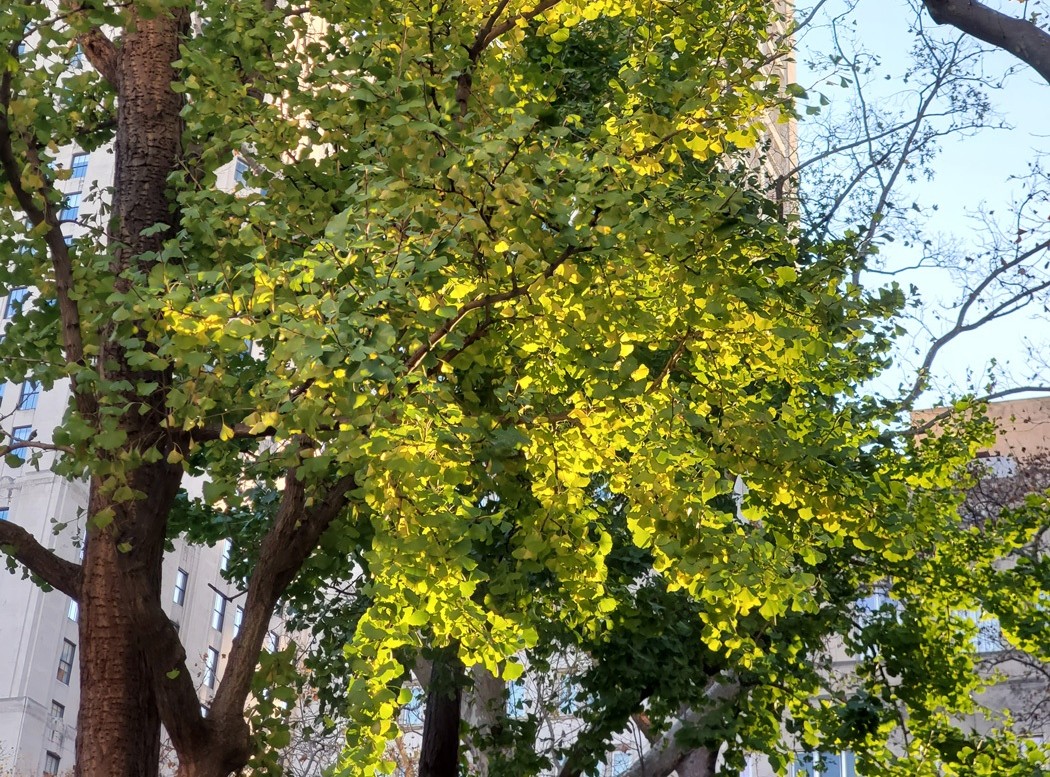This site uses cookies – Learn more.
Ginkgo
Ginkgo
The Ginkgo tree is one of the most interesting trees in the park. They glow in the fall with vibrant yellow foliage. Ginkgo trees are prized not only for their fall foliage but for their use in traditional medicine. Their fan-shaped leaves are unique among seed plants, with veins radiating out from the leaf blade.
Fossils of Ginkgo leaves show that the tree first appeared during the early Jurassic period, then spread through the supercontinent of Pangea, 200 million years ago. Around 1.8 million years ago, they disappeared from the fossil record almost entirely, except for a small region of central China. For centuries, it was thought to be extinct in the wild, but is now known to grow natively in two regions of eastern China. These isolated populations of Gingkos are thought to have been cultivated by Chinese monks over the course of thousands of years.
Unlike some trees, ginkgos have two sexes. Male trees produce pollen cones, while female trees develop seeds. The seeds are attractive in appearance but smell unpleasant. Because of this, male trees are often preferred in parks. With their incredible resistance to disease and bad weather, Ginkgos are known to live more than 2,500 years.





